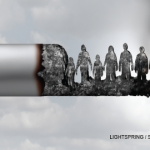Similarly, the Hispanic paradox, unique to the U.S., describes the observation that people of Hispanic descent live longer than non-Hispanic Caucasians, who on average happen to be wealthier and better educated. For example, in 2006, life expectancy at birth in the U.S. was 2.5 years longer for Hispanics than for non-Hispanics. This paradox is real; data errors, such as small sample size or the underreporting of Hispanic ethnicity on death certificates, cannot fully explain it.10
A recent epidemiologic analysis may have solved these two riddles with a single explanation: It may be that lower smoking rates among Hispanics and immigrants confer upon them added years of living.11 I’ll drink to that!
The Paradox of Choice
Of course, the medical paradox can arise in situations that are unrelated to dietary factors or smoking behaviors. Rheumatologists of a certain age may recall the era when there were no viable options to treat or prevent osteoporosis. Although we recognized that our judicious use of corticosteroids might contribute to further bone loss in our patients, we had few therapeutic interventions to reduce the ongoing bone demineralization other than advising our patients to take calcium and vitamin D supplements and hope for the best. Then along came bisphosphonates, and suddenly, we had a way to reduce the risk for hip or vertebral bone fracture. With the advent of generic formulations of these products, the cost of bisphosphonates dropped.
However, a recent study led by Daniel Solomon, MD, MPH, professor of medicine at Harvard Medical School in Boston, described an odd paradox.12 They studied claims data of an older population of adults who had sustained a hip fracture, and they observed that osteoporosis medication use in this population fell precipitously over the past several years. For example, in 2002, medication use was 40.2%, but by 2011, it was reduced by half, to 20.5%. How could this be? Because the risk of suffering a second hip fracture is about 10%, one would reckon that most patients would be inclined to seek treatment that could cut their risk by half. Clearly, this was not the case. Instead, the drumbeat of warnings in the lay press and media about the hazards of bisphosphonate therapy, such as osteonecrosis of the jaw, atypical femoral fractures or atrial fibrillation—all rather rare events—have frightened patients away from optimal osteoporosis therapies.
Risk aversion, even when the risks are rare, trumps promoting bone health. Quite the paradox.


